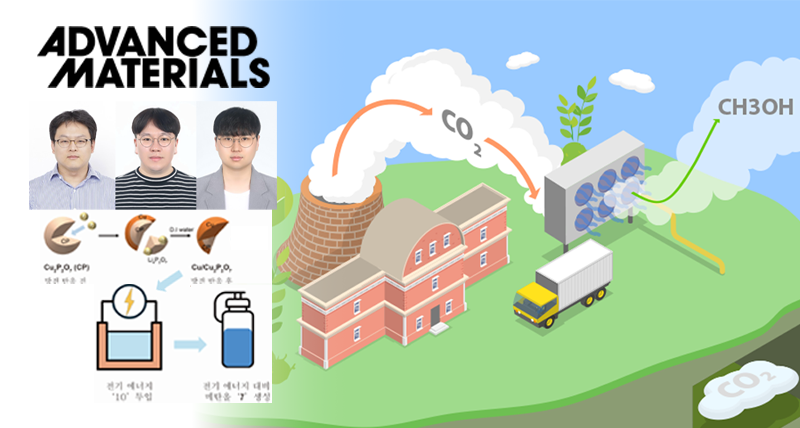A research team, affiliated with UNIST has made a significant breakthrough in sustainable technology through the development of a method to convert carbon dioxide (CO₂) into methanol—a process that could play a vital role in reducing greenhouse gas emissions and producing environmentally friendly fuels.
Led by Professor Jungki Ryu of the School of Energy and Chemical Engineering at UNIST, in collaboration with Professors Jongsoon Kim of Sungkyunkwan University (SKKU) and Aloysius Son of Yonsei University, the team announced on the 26th the successful development of a novel copper-based catalyst capable of transforming CO₂ into high-purity methanol.
Methanol is a versatile chemical widely used as a fundamental raw material in the production of plastics and synthetic fibers. Its liquid state allows for easy storage and transportation, making it increasingly attractive as a hydrogen carrier and fuel cell energy source. Converting CO₂ directly into methanol not only offers a pathway to reduce carbon emissions but also supports sustainable resource utilization. However, traditional conversion methods often produce mixtures containing undesired byproducts such as hydrogen and methane, necessitating complex purification processes.
The innovative copper catalyst developed by the research team selectively produces methanol with remarkable efficiency. It achieved a maximum selectivity of up to 70%, among the highest reported for copper-based catalysts, rivaling the performance of costly precious metal catalysts. Typical copper catalysts exhibit selectivities of only 10–30%.
This catalyst features a unique, tightly integrated structure where nanoscale copper(I) pyrophosphate (Cu₂P₂O₇) particles are seamlessly combined with pure copper metal, resembling a puzzle fit. This configuration suppresses competing reactions that produce hydrogen, enabling highly selective methanol synthesis.
Remarkably, the team fabricated this complex structure using an innovative approach inspired by lithium-ion battery discharge principles. By passing an electric current through the electrode during battery-like discharge, some copper pyrophosphate is reduced to metallic copper, causing the two materials to naturally form a composite within a single particle. After the reaction, residual materials can be easily washed away with water, simplifying the production process.
Furthermore, the study uncovered an alternative pathway for methanol synthesis that departs from conventional mechanisms. Instead of proceeding through carbon monoxide (CO), the catalyst first produces formic acid (HCOOH), which is then converted into methanol. This discovery provides new insights that could inform future catalyst development and deepen our understanding of methanol synthesis pathways.
Professor Ryu emphasized, “Methanol is a critical industrial raw material and energy source consumed worldwide in the millions of tons annually. This cost-effective catalyst, made from inexpensive copper, demonstrates high selectivity and current density, bringing us closer to industrial-scale ‘carbon resource conversion’—directly transforming CO2 into valuable resources.”
He added, “Utilizing principles from battery technology to fabricate the catalyst highlights its potential for practical, large-scale applications. We plan to expand this technology by scaling up electrode areas and integrating systems for commercial deployment.”
This research involved contributions from Dr. Hyunwoo Kim and Suhwan Park from UNIST School of Energy and Chemical Engineering, as well as Jihoe Lee from SKKU and Sangseob Lee from Yonsei University.
Recognized for its excellence and potential impact, the study was published online on May 20 in the prestigious scientific journal Advanced Materials, supported by the National Research Foundation of Korea (NRF) and the Ministry of Science and ICT (MSIT).












